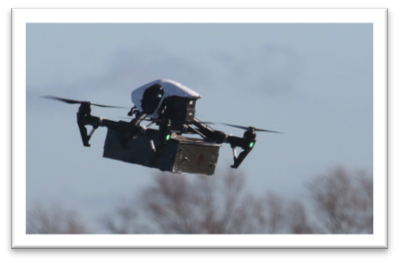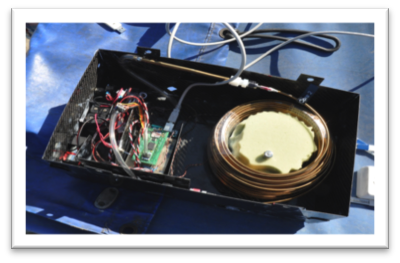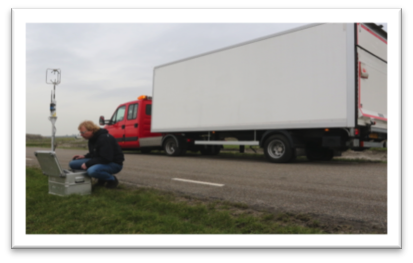Blogs
Katarina Vinkovic – Are the cow farts real threat?
After grabbing your attention with a catchy title, first, let’s make some facts clear. Some people still link the word “methane” to cow farts. Unfortunately, I have to disappoint you. Actually, cow burps are much more problematic. You must be wondering why is that so, right?
Cows are ruminants like sheep, goats, and buffalo. Ruminants are mammals with a unique digestive system that allows them to better use energy from fibrous plant material compared to other animals. Their digestive system is designed to ferment feedstuff and provide precursors for energy for the animal to use. After solving one of the biggest misconceptions, probably you have already guessed the focus of my research.
As a part of MEMO2 project, the aim of my research is to quantify methane (CH4) emissions using atmospheric concentration measurements on two different mobile platforms, a mobile van and an unmanned aerial vehicle (UAV), with a focus on the agricultural CH4 emissions, i.e. cattle, especially enteric fermentation and manure.
 |
|
Figure 1: Production of enteric CH4. A very stable temperature (39◦C), stable pH (6.5 – 6.8) and a constant flow of plants (cattle graze many hours per day) induce a production of metabolic hydrogen (H2) in the rumen, which is together with CO2 used by methanogenic Archaea to produce CH4 (Saunois et al., 2016). (Illustration taken from: http://www.fao.org/in-action/enteric-methane/background/what-is-enteric-methane/en/) |
UAV measurements (University of Groningen)
The UAV AirCore is an innovative atmospheric sampling system that consists of a long piece of coiled tubing. It uses a micro-pump to pull air slowly through the tube, and can sample atmospheric air in both vertical and horizontal planes (Andersen et al., 2018). The CH4 mole fraction measurements from the UAV AirCore are used to calculate the CH4 mole fraction difference between downwind and upwind of the farm. To integrate the enhanced CH4 mole fraction, data needs to be spatially interpolated to equally distribute grids in a plane. CH4 emission rate from the dairy cow farm is determined using a mass balance approach.
 |
 |
|
Figure 2: The UAV AirCore system |
|
Mobile van measurements (TNO)
Another mobile platform, i.e. a van, is used for sampling CH4 concentrations downwind of a source. The idea is to measure a transect through the emitted plume of the source (Fig.3.), and then compare the measurements with Gaussian plume model calculations to estimate the CH4 emissions.
 |
 |
|
Figure 3: Left: TNO mobile van measurement setup. Right: Illustrated concept of the plume measurement technique (Hensen, 2011). |
|
Windy secondment at TNO
In the North Holland Province, a province of great sand beaches and windmills scattered all over it, you will find a small department of The Netherlands Organisation for applied scientific research (TNO), located next to a small village called Petten. During my 3 months of secondment (October 2018 – January 2019) at TNO, in the group of Environmental Assessment, I have started to develop a quick analysis tool for large datasets with multiple farms.
 |
|
Figure 4: The North Holland province, the Netherlands. |
The acquired observations were evaluated using the Gaussian plume model. The model was run first with one source per each farm. Afterwards the second model run including multiple sources per each farm, and in the end I compared it with the results from the first step. The analysis was performed on 5 different data sets that were collected between November 2017 and December 2018, in different parts of the Netherlands. The final goal is to calculate emission rate per farm per year, and compare it with an emission inventory methodology about what you will hear more in the future.
 |
|
Figure 5: Overview of mobile van measurements from November 2017 to December 2018 in the Netherlands. |
Even though my secondment was accompanied by extremely windy weather and with a quite amount of rain, I really enjoyed exploring another part of the Netherlands. The North Holland province amazes with wonderful landscapes, long patches of grass and water. Also, nearby cities as Alkmaar and Haarlem are definitely worth to visit. Each of them is full of interesting sights, events, old architecture and museums. Alkmaar as the capital of cheese with a very famous cheese market shouldn’t be skipped. I definitely feel rich for one more experience both privately and professionally.
For the end, I prepared you a small compilation of photos that I have collected during my secondment, and hope you will enjoy them as much I enjoyed my stay. J

References: Saunois, M., Bousquet, P., Poulter, B., Peregon, A., Ciais, P., Canadell, J. G., … Zhu, Q. (2016). The global methane budget 2000-2012. Earth System Science Data, 8(2), 697–751. Andersen, T., Scheeren, B., Peters, W., & Chen, H. A UAV-based active AirCore system for accurate measurements of greenhouse gases. Atmospheric Measurement Techniques Discussions, (2018), 1–28. Hensen, A. (2011): Methods for observation and quantification of trace gas emissions from diffuse sources, 1–144.
|

